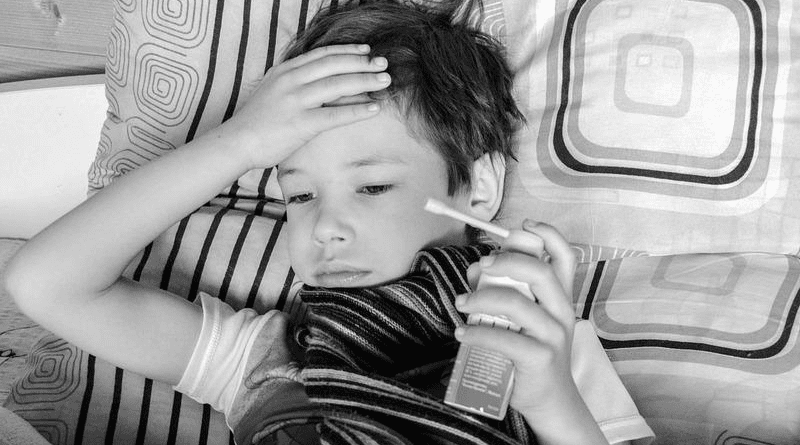Increased Prevalence Of Headaches In Adolescents During COVID-19 Pandemic
Over one third of schoolchildren who received online lessons during the COVID-19 pandemic reported a worsening of headache symptoms or new onset headaches, a study presented at the European Academy of Neurology (EAN) Congress 2022 has found.1
Prolonged exposure time to computer screens, a lack of suitable conditions for online learning from home, school exams and anxieties about COVID-19 were all found to be risk factors for the worsening of headache symptoms or triggering new onset headaches.
The multicentre study analysed 851 adolescents aged between 10 and 18, with 756 (89%) of children reporting headaches over the study period. Among these children, 10% reported new onset headaches over the pandemic home-schooling period. Over a quarter (27%) of children said their headaches had worsened, 61% said their headaches had remained stable and 3% said their headaches had improved.
Those who reported worsened or new onset headaches suffered from headaches an average of 8-9 times per month. Over half of children within this group (43%) used painkillers at least once a month compared to a third (33%) in the stable group.
Lead researcher Dr Ayşe Nur Özdag Acarli from Ermenek State Hospital, Karaman, Turkey, said that in contrast to previous reports, the team’s analysis didn’t support a tendency towards reduction in headache and severity during the pandemic.
“Although earlier studies reported that young people were having fewer headaches due to the closure of schools in the early weeks and months of COVID-19, this longer-term study has found the stresses and pressures of the pandemic eventually took their toll”, Dr Acarli explained.
The study found that headaches had a big impact on mental health and school achievements. Depression and anxiety scores, including anxiety about catching COVID-19, were significantly higher in the worsened and new onset headache groups. These respondents also acknowledged that they had made less effort with their schoolwork and their academic achievements had fallen.
Exams, living in a city, weight gain and depression were also linked to more frequent headache occurrences within the study.
Dr Acarli commented, “Young people had concerns about the quality and sufficiency of online education and 62% of respondents said they were dissatisfied with it, while 21% were indecisive. Headache severity and frequency showed significant correlation with age, depression, and anxiety.”
Headache is the most common neurological issue in children and adolescents. A complex mix of factors can contribute to headaches, including sleep, use of electronic devices and socioeconomic factors.
Over one third of schoolchildren who received online lessons during the COVID-19 pandemic reported a worsening of headache symptoms or new onset headaches, a study presented today at the European Academy of Neurology (EAN) Congress 2022 has found.1
Prolonged exposure time to computer screens, a lack of suitable conditions for online learning from home, school exams and anxieties about COVID-19 were all found to be risk factors for the worsening of headache symptoms or triggering new onset headaches.
The multicentre study analysed 851 adolescents aged between 10 and 18, with 756 (89%) of children reporting headaches over the study period. Among these children, 10% reported new onset headaches over the pandemic home-schooling period. Over a quarter (27%) of children said their headaches had worsened, 61% said their headaches had remained stable and 3% said their headaches had improved.
Those who reported worsened or new onset headaches suffered from headaches an average of 8-9 times per month. Over half of children within this group (43%) used painkillers at least once a month compared to a third (33%) in the stable group.
Lead researcher Dr Ayşe Nur Özdag Acarli from Ermenek State Hospital, Karaman, Turkey, said that in contrast to previous reports, the team’s analysis didn’t support a tendency towards reduction in headache and severity during the pandemic.
“Although earlier studies reported that young people were having fewer headaches due to the closure of schools in the early weeks and months of COVID-19, this longer-term study has found the stresses and pressures of the pandemic eventually took their toll”, Dr Acarli explained.
The study found that headaches had a big impact on mental health and school achievements. Depression and anxiety scores, including anxiety about catching COVID-19, were significantly higher in the worsened and new onset headache groups. These respondents also acknowledged that they had made less effort with their schoolwork and their academic achievements had fallen.
Exams, living in a city, weight gain and depression were also linked to more frequent headache occurrences within the study.
Dr Acarli commented, “Young people had concerns about the quality and sufficiency of online education and 62% of respondents said they were dissatisfied with it, while 21% were indecisive. Headache severity and frequency showed significant correlation with age, depression, and anxiety.”
- Headache is the most common neurological issue in children and adolescents. A complex mix of factors can contribute to headaches, including sleep, use of electronic devices and socioeconomic factors.

